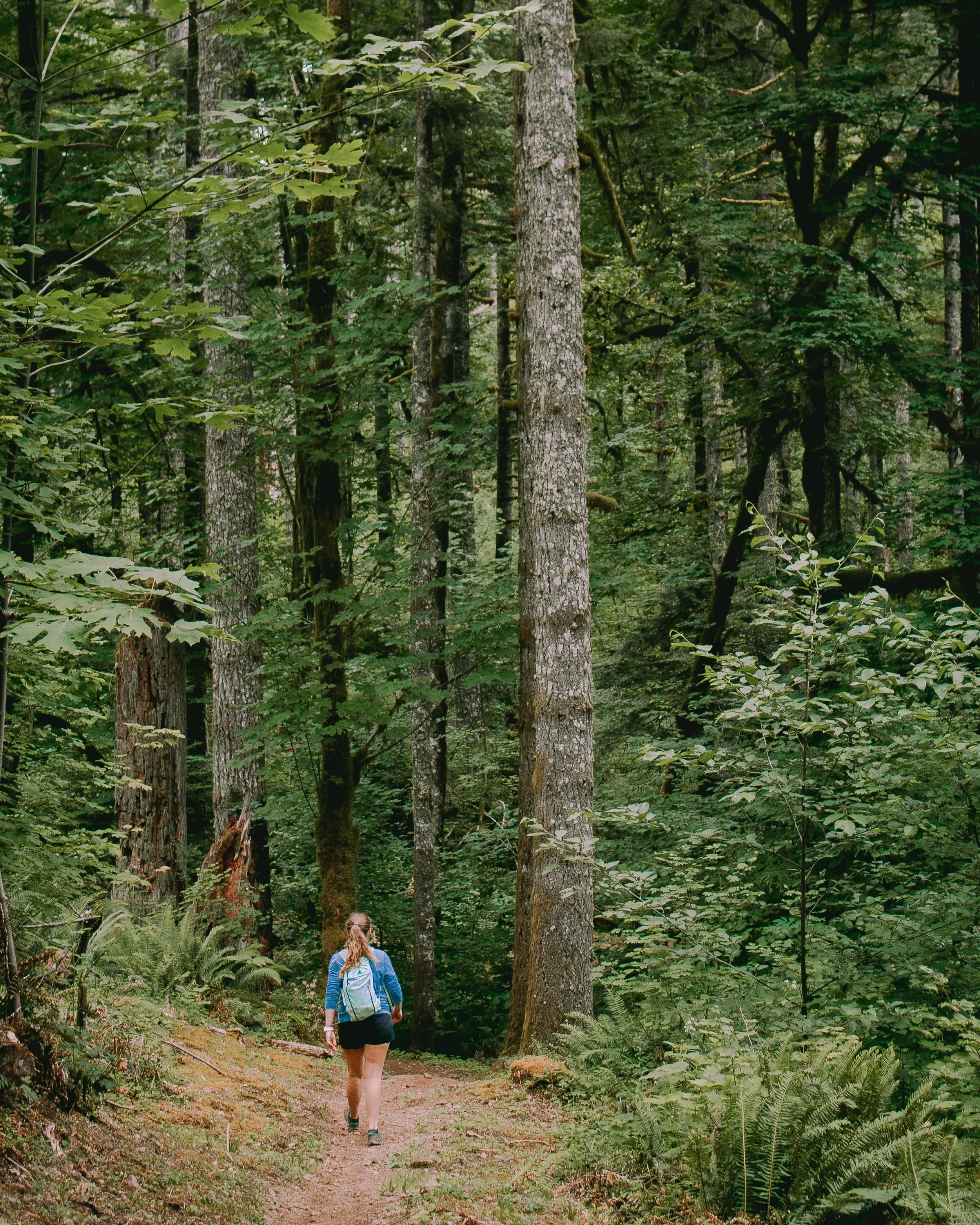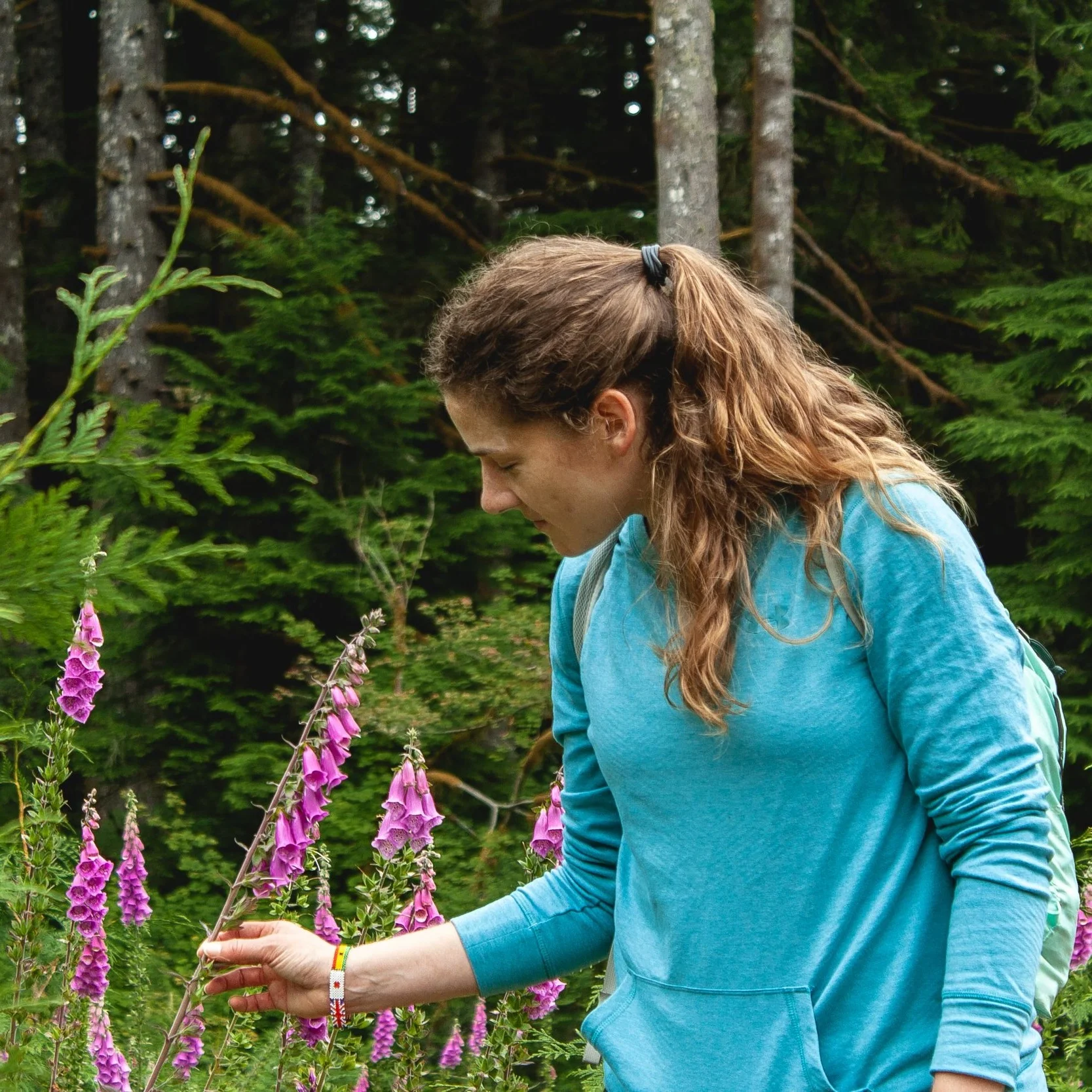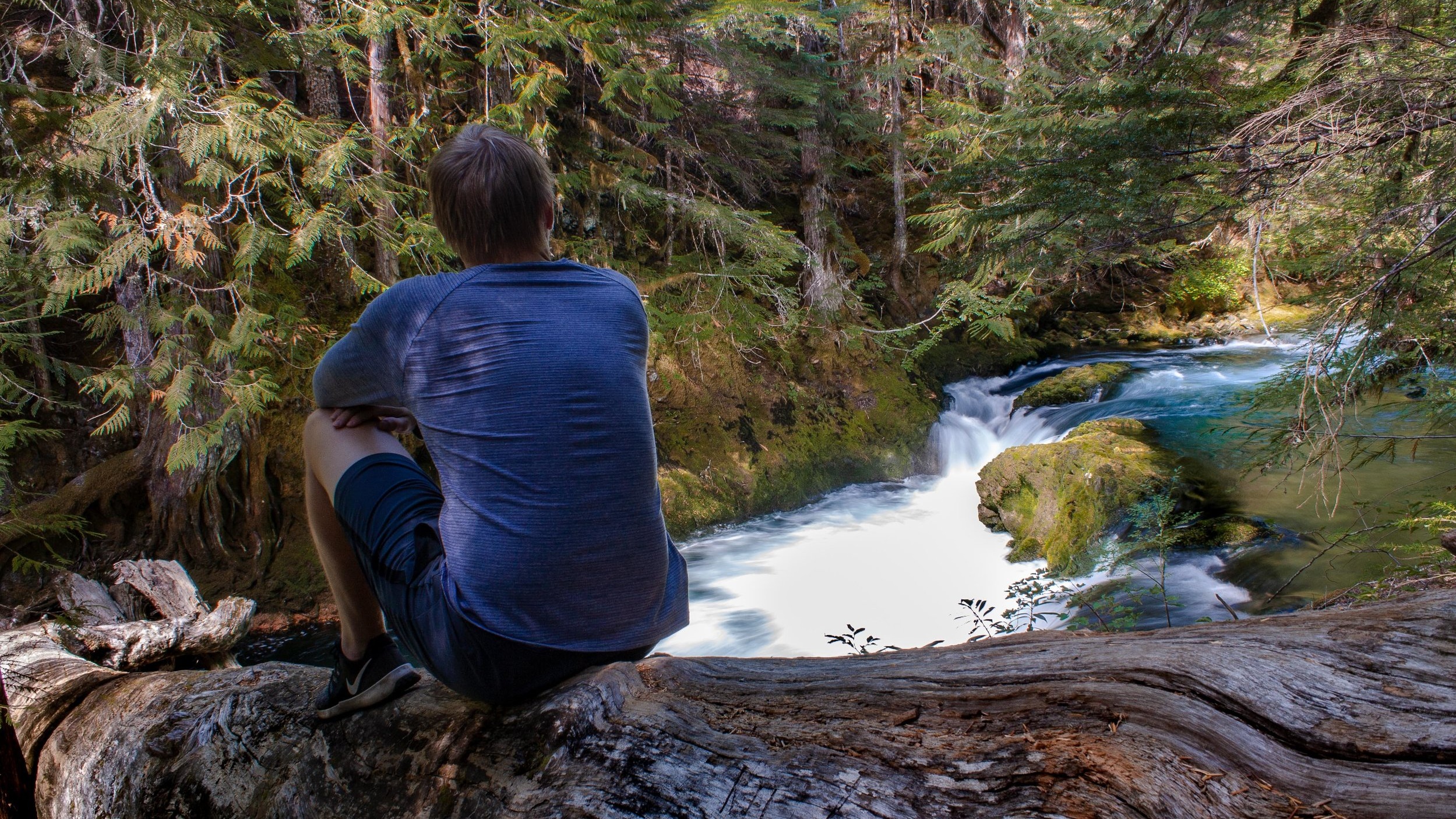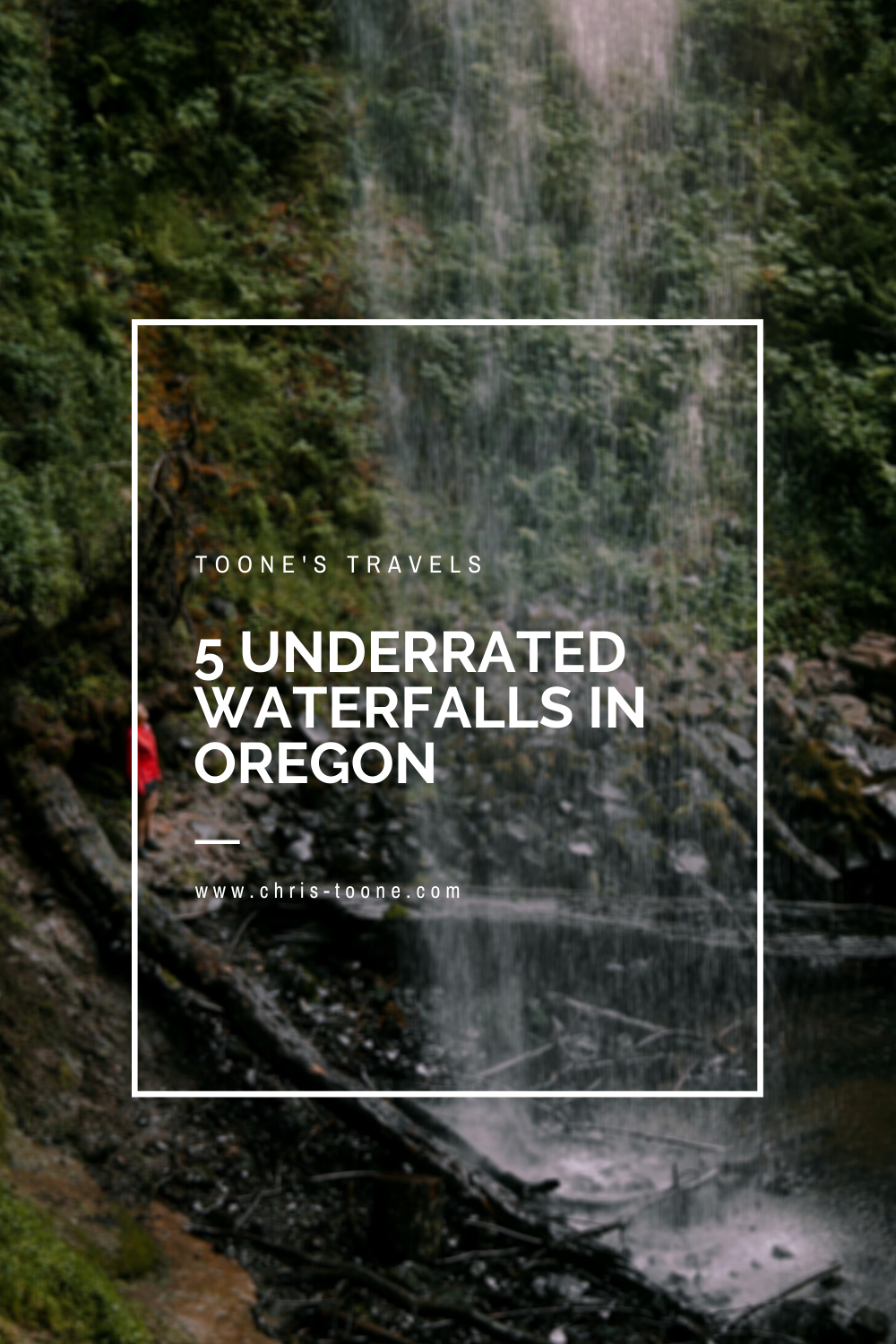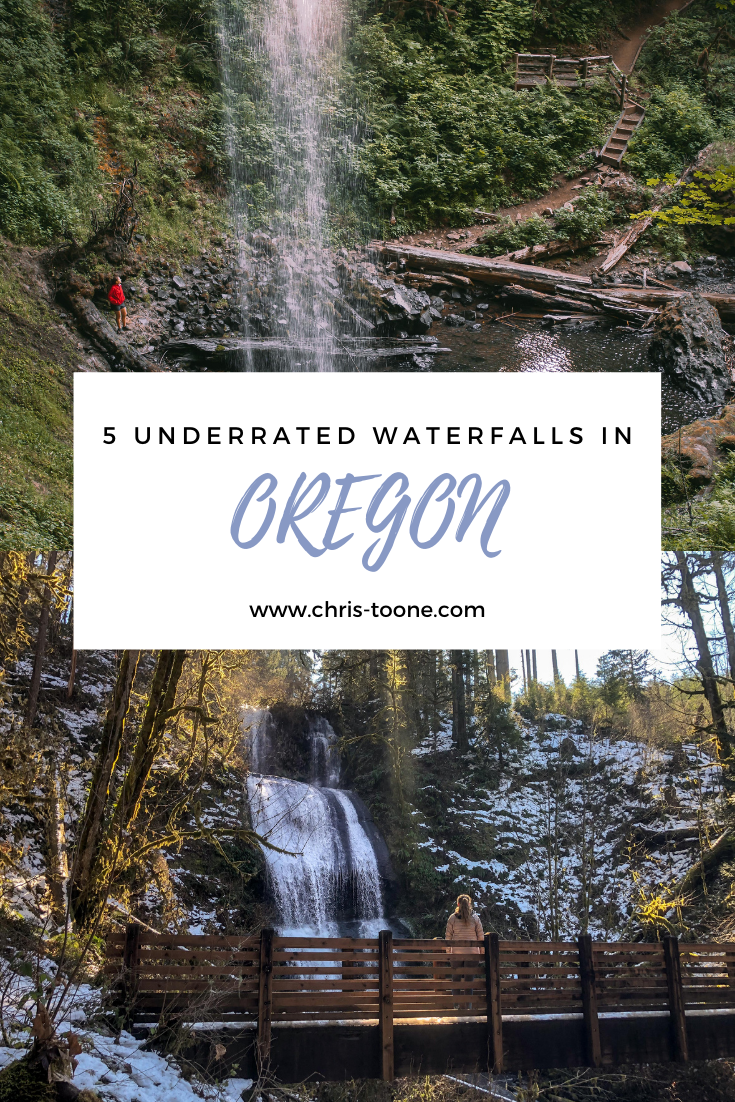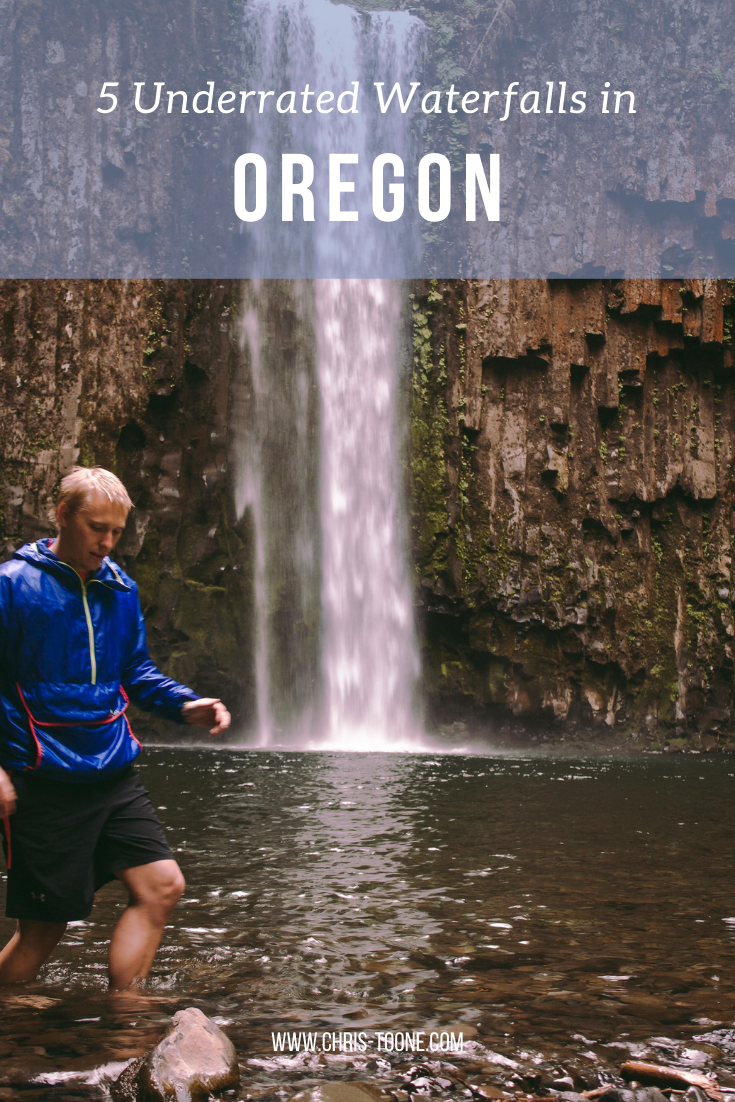Exploring Mole National Park: Ghana’s Premier Wildlife Destination
Mole National Park is Ghana’s largest and most famous wildlife reserve, offering a breathtaking blend of savannah landscapes and diverse animal species. Located in the northern part of the country, it’s a haven for wildlife enthusiasts, photographers, and eco-tourists looking for an immersive safari experience...
Note: All information is up to date as October 2024 and is based around staying at the Mole Motel, however other accommodations exist within the park and are included in the post below.
Mole National Park is Ghana’s largest and most famous wildlife reserve. Located in the northern part of the country, it offers a breathtaking blend of savannah landscapes and diverse animal species. It’s a haven for wildlife enthusiasts, photographers, and eco-tourists looking for a unique safari experience.
After visiting Ghana for the past fifteen years and living here full-time for two, it’s a place that’s at the top of my list to not only bring visitors to but also myself to recharge and slow down!
An elephant is spotted on a morning game drive at Mole National Park in Ghana
HISTORY
Established in 1958 and officially designated as a national park in 1971, Mole National Park covers approximately 4,849 square kilometers. It is home to over 90 mammal species, including elephants, buffalo, baboons, warthogs, and antelopes. Depending on the park ranger, you may even hear a tale about the elusive lions that some say still roam the expansive interior forests. The park also boasts nearly 300 bird species, making it a hotspot for birdwatchers.
One of the Mole’s unique features is its year-round accessibility and the chance to observe elephants up close, especially during the dry season when they frequent waterholes. As one of West Africa’s best-preserved wildlife reserves, Mole National Park continues to attract travelers looking for an authentic African safari experience in a less commercialized setting.
I’ve visited the park in January, April, August, and December and have never been disappointed with wildlife viewing. Warthogs roam the motel grounds and even elephants come to say ‘hello’ at times. Careful of the baboons, though. They’ve been known to steal your food at the restaurant and open your room if it’s not locked — speaking from experience.
An antelope is spotted in the morning glow at Mole National Park - Ghana, West Africa
HOW TO GET TO MOLE NATIONAL PARK
Mole National Park is located in northern Ghana, approximately 150 kilometers from Tamale, the capital of the Northern Region. There are several ways to get there:
By Air: The easiest way is to fly from Accra to Tamale Airport. From Tamale, a private vehicle can be arranged through your accommodations. Other options include a shared taxi or a bus to Mole, which takes around 3-4 hours. Note: things are spread apart in the northern areas of Ghana. The most efficient option is a private vehicle with driver that costs GHC 1,500 round trip.
By Road: For those who prefer road travel, buses operate from Accra, Kumasi, and other major cities to Larabanga, the nearest town to the park. From Larabanga, it’s a short ride to Mole National Park.
Don’t want to do the planning? Check out this 3-day tour to Northern Ghana!
ENTRANCE AND ACCOMMODATION
The beauty of Mole National Park lies in its affordable rates compared to other safari destinations in Africa. The entry fees are as follows:
Ghanaian citizens: GHS 10–15 (approx. USD 1–2)
Non-residents: GHS 40–60 (approx. USD 4–6)
*Discounts apply for children and students
Vehicles: Vehicles must also pay a nominal entrance fee into the park. This is the case even if a driver is dropping you off and will pick you in a few days. A Ghana registered car will cost GHC 5.00.
Accommodation: Mole offers a variety of accommodation options to suit different budgets, all located within the park:
Mole Motel:
This budget-friendly option offers basic rooms and chalets with stunning views of the park’s watering holes, where elephants and other animals often gather. Rates start around USD 30–75 per night. A range of accommodations is available, from dorm rooms to chalets overlooking the watering hole.
Although basic and far from luxurious, most rooms include A/C and I can personally attest that they have made several improvements over the years. Plus, the whole point is to be outdoors and enjoy nature, right?
A restaurant and bar exists onsite and offers a wide variety of food, including pizzas, burgers, local foods, and even Chinese. If you’re looking for a truly northern Ghana experience, don't miss the guinea fowl. This tough meat is a Ghanaian favorite in that part of the country!
Mole Motel is a great place to bring a book, enjoy a Club beer, and relax by the pool while spotting elephants below. It’s one of my favorite places in Ghana to experience a sunset.
It’s not uncommon to see a family of warthogs grazing the grounds or elephants visiting the motel for breakfast! Sometimes the universe is in your favor and the wildlife comes to you.
Note: Although Mole Motel is listed as having wifi, the network is very unstable It works enough to send messages from your phone, depending on where you are, but I would not recommend coming here for remote work.
Zaina Lodge:
For those seeking a more luxurious experience, Zaina Lodge offers high-end accommodations with private tented chalets, an infinity pool, and premium services. Prices start at USD 300 per night and are inclusive of meals and game drives.
I haven’t stayed here because I prefer Mole Motel. Part of the charm of northern Ghana is the raw and remote wilderness, but I can see how a luxury place like this would be great for family vacations!
Camping:
For the more adventurous, camping facilities are available within the park near the ranger's station just outside of Mole Motel. You’ll need your own gear, and fees are approximately GHS 50 (USD 3) per night.
Mole Motel in Ghana as seen from the watering hole
WHAT TO EXPECT
Visiting Mole National Park provides an unforgettable safari experience without the crowds typical of other African reserves. The best times to visit are during the dry season (November to April), when animals congregate around water sources, making sightings easier.
Three of the most common activities in Mole National Park are walking safaris, game drives, and birdwatching:
Walking Safari:
Mole is one of the few national parks in Africa where you can go on a walking safari. Accompanied by armed rangers, you’ll explore the park on foot and get incredibly close to elephants, antelope, and more. Some level of fitness is required for this and it’s best to go early in the morning to avoid the heat.
If you don’t spot elephants on your trek, don’t worry. Rangers will happily take you back into the bush when they are spotted near the watering hole throughout the day (for an additional fee, of course).
The walking safaris are so cheap because all you pay for is a guide at an hourly rate (GHC 12 per hour for non-nationals). You read that right: a two-hour walking safari with elephants will cost you GHC 24, around USD 1.50. These occur at 7 am and 3:30 pm each day and no sign-up is required. Simply show up at the guard station!
Game Drives:
Open-top vehicle safaris offer a different perspective of the park, covering larger distances and giving you a better chance of spotting wildlife like warthogs, buffalo, and birds of prey.
There are day-time and night-time safari options, both with unique advantages. I’d recommend doing both as the drive in the dark gives unparalleled views of the stars and you’ll often see different animals such as bush babies, genet cats, owls, and more. If you’re lucky, maybe you’ll see an elephant both during the day and night!
For small children and those with fitness concerns, driving is the more comfortable and accessible option.
Compared to a walking safari, the game drives are a bit more expensive as you must pay both the guide and vehicle fees. A safari-vehicle rental fee for both day and night is GHC 200 per hour and a guide fee for non-nationals at night is GHC 40 per hour while daytime is GHC 12 per hour.
This means a two-hour game drive during the day will cost you GHC 424, around USD 25, and at night GHC 480, or USD 30. If you make friends at motel, share a vehicle and lower the costs by splitting the vehicle fee between people.
Similar to walking safaris, game drives occur at 7 am and 3:30 pm daily, while night drives take place from 7pm-9pm.
Note: Book your night safari early at the guard station. These must be reserved in advance to ensure a vehicle is available.
Birdwatching:
Mole is a paradise for birdwatchers, with species such as the white-backed vulture, martial eagle, and saddle-billed stork commonly spotted. Birdwatching tours are also available for those keen to explore the avian diversity and can be enquired through Mole National Park’s website.
A Woodland Kingfisher is spotted with an elephant in the background - Mole National Park, Ghana
NEARBY ATTRACTIONS
Mole National Park is a gateway to several other exciting destinations in northern Ghana and many visitors pair it with a cultural trip to the surrounding areas. Don’t be surprised if you’re approached by a tour guide at the motel; this is common practice!
Larabanga Mosque:
Just a 20-minute drive from Mole, this ancient mosque is an architectural gem and holds significant religious and historical importance in Ghana. Visitors can take guided tours to learn about its fascinating history, and explore community projects in the village like the local school and a shea butter-making process.
Mognori Eco-Village:
Located just outside the park, this community-run initiative offers visitors the chance to experience traditional village life. You can take a canoe safari along the Mole River or enjoy a cultural drumming and dancing session with the locals.
Ready to explore more of Ghana’s natural beauty? Click here to get started!
WHAT TO PACK
Make no mistake about it, although Mole National Park is a well-visited tourist destination, it’s still very remote and there are some important considerations when packing. Here’s what to bring:
Cash — Credit cards are accepted at the Mole Motel and Restaurant (network dependent), but it’s cash-only to pay the park rangers for the safaris. There’s also a small provisions and gift shop which is also cash-only. Stop at an ATM in Tamale and pull out enough money for your visit.
Medicine — You never know how your body will respond to different foods in remote areas. It’s best to pack basic medicines for stomach issues, allergies, and more. On one trip my friend was stung by a wasp, his eye swelled, and all we could do was “ice” it with the coldest water bottle we could find. There is a small health clinic in the nearby village within park borders, but don’t rely on this (speaking from experience)!
Warm Clothes — If visiting in December, it gets cold at night which means the morning and night game drives will require you to bring layers. It sounds odd given Ghana’s equatorial location, but trust me when I say the last thing you want is to be on top of a safari vehicle shivering for two hours.
Torch — When the sun goes down, it gets dark and the last thing you want to do is stumble upon a mother warthog grazing with her children. The grounds within the motel gates are small, but it’s still useful to have a torch to get back to your room after a few drinks at the bar to cap off a day of adventure.
Portable Charger - This comes in handy for multiple reasons. You won’t want your phone dying on a safari just when you track down an elephant. If you have the right model, it also serves as a hand warmer for those cool savanna mornings.
A hazy December sunset overlooking the watering hole at Mole National Park in Ghana
Mole National Park offers a unique and tranquil safari experience, perfect for travelers who want to immerse themselves in nature and observe wildlife in its natural habitat. Whether walking alongside elephants or watching a sunset over the savannah from the lodge, Mole promises a serene and unforgettable adventure. With its affordable prices, accessible location, and nearby cultural attractions, it’s an essential stop on any Ghana travel itinerary.
Ready to explore Ghana’s wild side? Start planning your Mole National Park adventure today and check out more posts about this incredible country below!
Sharing is caring! Pin this post for later.
Exploring the Wechiau Hippo Sanctuary in Ghana: Everything you need to know before you go
Tucked away in the Upper West Region of Ghana, the Wechiau Hippo Sanctuary offers visitors an extraordinary experience combining wildlife, culture, and scenic beauty. For nature lovers and adventure seekers alike, this off-the-beaten-path destination is a must-see during your trip to Ghana. Here’s everything you need to know about visiting the sanctuary...
Note: All information below is updated as of September 2024
Tucked away in the remote Upper West Region of Ghana, the Wechiau Hippo Sanctuary offers visitors an extraordinary experience combining wildlife, culture, and scenic beauty. For nature lovers and adventure seekers alike, this off-the-beaten-path destination is a must-see during your trip to Ghana. Here’s everything you need to know before you go.
HISTORY OF WECHIAU HIPPO SANCTUARY
The Wechiau Hippo Sanctuary is a community-run conservation project, created to protect one of the last remaining populations of hippos in Ghana. Established in 1999 in partnership with the Calgary Zoo, the sanctuary spans a 40-kilometer stretch along the Black Volta River, which forms part of the border between Ghana and Burkina Faso. Not only does it protect hippos, but it also preserves the surrounding savannah, woodland, and riverine ecosystems, while promoting sustainable tourism that benefits local communities.
Black Volta River from above
HOW TO GET TO WECHIAU
The Wechiau Hippo Sanctuary is located about 85 kilometers from Wa, the capital of the Upper West Region. Visitors traveling from Accra or other major cities in Ghana can fly into Wa Airport, with a connecting domestic flight from Kotoka International Airport.
Passion Air is the only domestic airline to run the route and has only one daily flight except for Tuesdays and Saturdays. Tickets will cost you between USD 150-250.
It’s important to note that Ghana’s domestic flights aren’t immune to last-minute delays or cancelations but Passion Air is reputable for following through on rebooking and refunds.
Once in Wa, you can take a bus, shared taxi, or hire a private car to reach the sanctuary. The road from Wa to Wechiau is generally in good condition, but is not paved the entire way turning off the main road it will be dirt the rest of the way.
The drive is approximately 45min - 1 hour from Wa to the sanctuary reception. Once finished there, it’s another 45min drive through farming paths, heavy brush, and washed out “roads” to the riverbank.
If you find yourself on a whirlwind of a roadtrip through Northern Ghana like we were, then your best bet is to reach Wa from Tamale. This 4.5 hour drive is mostly on paved roads and takes you around the outer rim of Mole National Park, making it an easy trip to pair with the elephant safari and Larabanga Ancient Mosque if you have a few days.
A bloat of hippos spotted on the river
COST OF VISITING THE WECHIAU HIPPO SANCTUARY
The entrance fee for the sanctuary is relatively affordable, and it directly supports the conservation efforts and local community. As of 2024, prices for non-residents hover around GHS 30–50 (approx. USD 3–5), while Ghanaian citizens may pay a reduced rate. Additionally, guided tours of the sanctuary are available, costing around GHS 100–150 (USD 10–15) per group (this includes guide and boat fee).
Ready to learn more about Ghana? Check out these posts
WHERE TO STAY IN WECHIAU
Most accommodation options are in Wa. Two to consider are:
Dellagio Hotel: A welcomed site after a long couple days of driving. This hotel is comfortable, safe, and secure with a large outdoor space to relax and a restaurant with quality food. Wifi and breakfast are included. After learning the Lakeview Hotel was fully booked, we ended up here and although a little more expensive it was a great stay! A standard room will cost you GHC 565, approximately USD 35.
Kamara Lakeview Hotel: This is a newer hotel in Wa and isn’t fully completed yet, but the staff was very accommodating in referring us to Dellagio. The rooms are clean and comfortable, especially for GHC 394 per night, around USD 25.
Both of these hotels are located about 1 hour drive from the Wechiau Hippo Sanctuary.
At the sanctuary itself, a few options exist. For an authentic experience, consider staying overnight in a traditional homestay with a local family, which typically costs GHS 80–100 (USD 8–10) per night, or camp at the Hippo Hide and listen to the grunting at night as the animals make their way to land to feed. A basic guesthouse also exists near the riverside, with basic rooms starting at around GHC 100 per person, per night.
The banks of the Black Volta River, shot from Ghana and looking into Burkina Faso
WHAT TO EXPECT AT WECHIAU HIPPO SANCTUARY
One of the sanctuary's main draws is the boat trip on the Black Volta River, where you can observe hippos in their natural habitat. Unlike typical wildlife safaris, this offers a more intimate and peaceful encounter with these majestic creatures. The best time to spot hippos is in the early morning or late afternoon, as they tend to retreat to the water to stay cool during the hottest part of the day. As on any safari experience, there’s never a guarantee to see the hippos. This is especially true during rainy season when the water level rises.
It’s important to note that there are multiple entry points onto the Black Volta, and the guides will take you to where they feel you have the highest chance of viewing hippos. Fortunately for us, the conservation team had just completed a census the day prior.
We drove my rusty Honda Pilot through small villages and dense brush before reaching the riverbank where a dugout canoe awaited. After donning our life vests we pushed away and were swiftly carried downstream by the strong current, immediately spotting a lone hippo in the distance.
After another few minutes of floating, we anchored to the tree branches as we flanked a bloat of hippos in the middle of the river. We had spoken to someone who had visited a week prior and after a few hours in a canoe they weren’t able to see any animals so needless to say this was unexpected. But there we were, fighting the current of the Black Volta, staring across the river into Burkina Faso, and viewing hippos in their natural habitat all the while one guide kept us steady and the other emptied water from the wooden floor.
It’s not always the most comfortable feeling being in canoe on a flooded river with one of the world’s most dangerous animals — we even had a rogue hippo leave the group and inch towards our spot, diving underwater and resurfacing closer than before — but our guides assured us that humans have never been attacked since the conservation area was established.
Besides hippo watching, the sanctuary is home to diverse bird species and other wildlife, including monitor lizards, crocodiles, and baboons. Nature walks with local guides allow you to explore the unique flora and fauna of the region, and for those interested in cultural experiences, visiting surrounding communities offers insight into the local way of life. The area is also known for its shea butter production.
Hippos spotted from canoe on the Black Volta River in Ghana
NEARBY ATTRACTIONS
While in the Upper West Region, consider extending your adventure by visiting some of the nearby attractions:
Wa Naa’s Palace – Located in Wa, this historic palace is the seat of the Wa Naa, the traditional ruler of the region. It’s an excellent spot to learn about the local culture and history. Note that the palace is still in use today so be sure to check in at the appropriate entrance.
Gbelle Game Reserve – Roughly 60 kilometers from Wa, this lesser-known game reserve is home to elephants, antelope, and various bird species. With that said, we dug through research to find more on this place and ultimately decided to pass on our drive north. No one in the area could tell us reliable information and there was no indication of the reserve on our route. We’ll definitely be going back to do more investigation. Hopefully you have better luck!
Gwolu Bone Setting Clinic - A little over 3 hours away from Wechiau is the unofficial border town of Gwolu. Here, one of the most frequented and last remaining traditional bone setting clinics is situated. This unassuming building draws in people from all over the north and even a few kilometers away from neighboring Burkina Faso in search of traditional treatment for fractures.
An aerial view of a bloat of hippos
The Wechiau Hippo Sanctuary is one of Ghana’s best-kept secrets, partially because it’s not the most accessible. If you’re willing to commit to the adventure, you’ll be spoiled by wildlife, culture, and stories to share. When planning a trip to Ghana, this is a “can’t miss” opportunity to discover a different side of the country’s natural wonders, and maybe even a quick trip across the river to unofficially reach Burkina Faso!
This is certainly and experience I won’t be forgetting anytime soon and is one of the most unique things I’ve been fortunate enough to do during my time in Ghana. It’s well worth the effort to reach there. So, what are you waiting for?
Sharing is caring! Pin this post for later.
5 of the most underrated waterfalls in Oregon
Although Multnomah may be the most popular waterfall in Oregon, the state is home to at least 237 others! Here’s a list of 5 of the most underrated waterfalls, deep within the verdant forests of this mystical place. It’s time to break out the hiking shoes for these incredible adventures!
Please note: All information below is updated as of May 2023
Growing up just outside of Buffalo, New York, I had the luxury of being able to visit Niagara Falls whenever I wanted. Needless to say, with one of the seven natural wonders of the world in my backyard as a child, my standard for waterfalls may be a bit unfair - or so I thought!
Although Multnomah Falls may be the most well known and photographed waterfall in all of Oregon, the beaver state is home to over 230 others. It’s hard to find a hike in Central Oregon that doesn’t lead to a magical view of these natural wonders.
With a plethora of hidden gems all around, here are my top 5 most underrated waterfalls found in Oregon, USA. It’s time to break out the hiking shoes!
1. SHELLBURG FALLS
Located in the Santiam Foothills near Mehama, Oregon, Shellburg Falls is a 100ft tall cascading waterfall that flows over a stunning basalt ledge.
The hike starts by following a gravel road before entering the old-growth forest. Note: this road is private property and crosses through an open cattle range. Once you’ve reached a small bridge that crosses above Shellburg Creek, there will be stairs on the left that mark the beginning of the trail to the waterfall.
The path leads directly to Shellburg Falls and even takes hikers beneath the ledge and behind the flowing water, offering a unique perspective. Continue trekking through the forest and wildflowers before rejoining the gravel road at the other end of the loop. Pro Tip: Go early. This hike is easily accessible and good for all ages, making it heavily trafficked.
Hiking Distance: 6.0mi loop trail
Elevation Gain: 1,036 feet
Rating: Easy to moderate
Fee: None
Bathrooms: Vault toilets are located at the Shellburg campground, approximately 0.6mi past the waterfall
2. OPAL CREEK WILDERNESS (SAWMILL FALLS)
This trail is currently listed as CLOSED.
The Opal Creek Wilderness trail is a 6.9mi loop near Lyons, Oregon. Surrounded by stunning cedar trees, the hike flanks the Little North Santiam River as it winds its way through an abandoned mining operation from over a century ago.
The real gem of this trail is the numerous cut-offs to various waterfalls and swimming holes along the way, the most beautiful of which is Sawmill Falls. Make sure to bring a swimsuit and take a dip in the beautiful blue water!
Hiking Distance: 4mi. out and back to Sawmill Falls, 6.9mi. loop through Jawbone Flats
Elevation Gain: 652 feet
Rating: Easy
Fee: $5.00
Bathrooms: Vault toilets located at trailhead parking lot and in Jawbone Flats
Sawmill Falls
3. ABIQUA FALLS
Abiqua Falls is an out and back 5.3mi trail located near Scotts Mills, Oregon that features a short hike through the forest and along a crystal clear river before reaching the 92ft. waterfall.
The trailhead can be found by following a single lane dirt road, with parking available in turnouts along the way. Continue following the road by foot as it descends deeper into the forest until reaching the trailhead. From here it’s a short 0.8mi. hike to the waterfall, but keep in mind the elevation gain becomes difficult on the way back out.
Keep telling yourself that it’s worth it because it is! If you’re daring like me, be sure to take a quick dip in the freezing, yet refreshing, pool below the falls. Note: The hike is on private property and can get steep at times. Exercise caution and be respectful.
Hiking Distance: 5.3mi. out and back (dependent on parking location), 0.8mi. to the waterfall from the trailhead
Elevation Gain: 1,397 feet
Rating: Hard (mostly due to the elevation gain on the way out)
Fee: None
Bathrooms: Not available
4. McDOWELL CREEK FALLS TRAIL (ROYAL TERRACE FALLS)
In search of a hidden wonder in Oregon? Look no further than McDowell Creek County Park, located 16mi. east of Lebanon. Here you’ll find McDowell Creek Falls Trail, a 1.8mi loop that leads to two beautiful waterfalls: Royal Terrace Falls and Majestic Falls.
Cascading a total of 119 feet between the two levels, Royal Terrace Falls was named from its unique terraced appearance, often found in royal palaces around the world. The trail itself winds its ways through the lush forest, taking hikers along bridges, stairs, and platforms, all providing the perfect views of the falls.
A great day trip for all ages!
Hiking Distance: 1.8mi. loop trail
Elevation Gain: 288 feet
Rating: Easy
Fee: None
Bathrooms: Not available
5. KOOSAH AND SAHALIE FALLS
Do you recognize any of the pictures below? Dig deep into the 90’s Disney movie vault… Sahalie Falls was featured in Homeward Bound! Still not ringing a bell? It’s ok - it’s still worth a visit!
The Waterfall Trail is a 2.6mi loop that runs adjacent to the McKenzie River as it winds past Koosah (70ft) and Sahalie (100ft) falls.
Along the way, accessory paths veer off and provide viewpoints of the area that many hikers fail to experience, so make sure to wander a bit! The main trail is marked, making it easy to stay on course. Pro Tip: Park at and start the hike from Koosah Falls instead of Sahalie. This lot is typically less congested.
Hiking Distance: 2.6mi. loop trail
Elevation Gain: 357 feet
Rating: Easy
Fee: None
Bathrooms: Vault toilets are available at Sahalie Falls parking lot
Ready to get out and explore yet? Wherever you are the world, make sure to leave time for a new adventure and, if you ever find yourself in Oregon, be sure to check out one of these hikes!
Thanks for reading and as always, stay safe & happy travels.









































